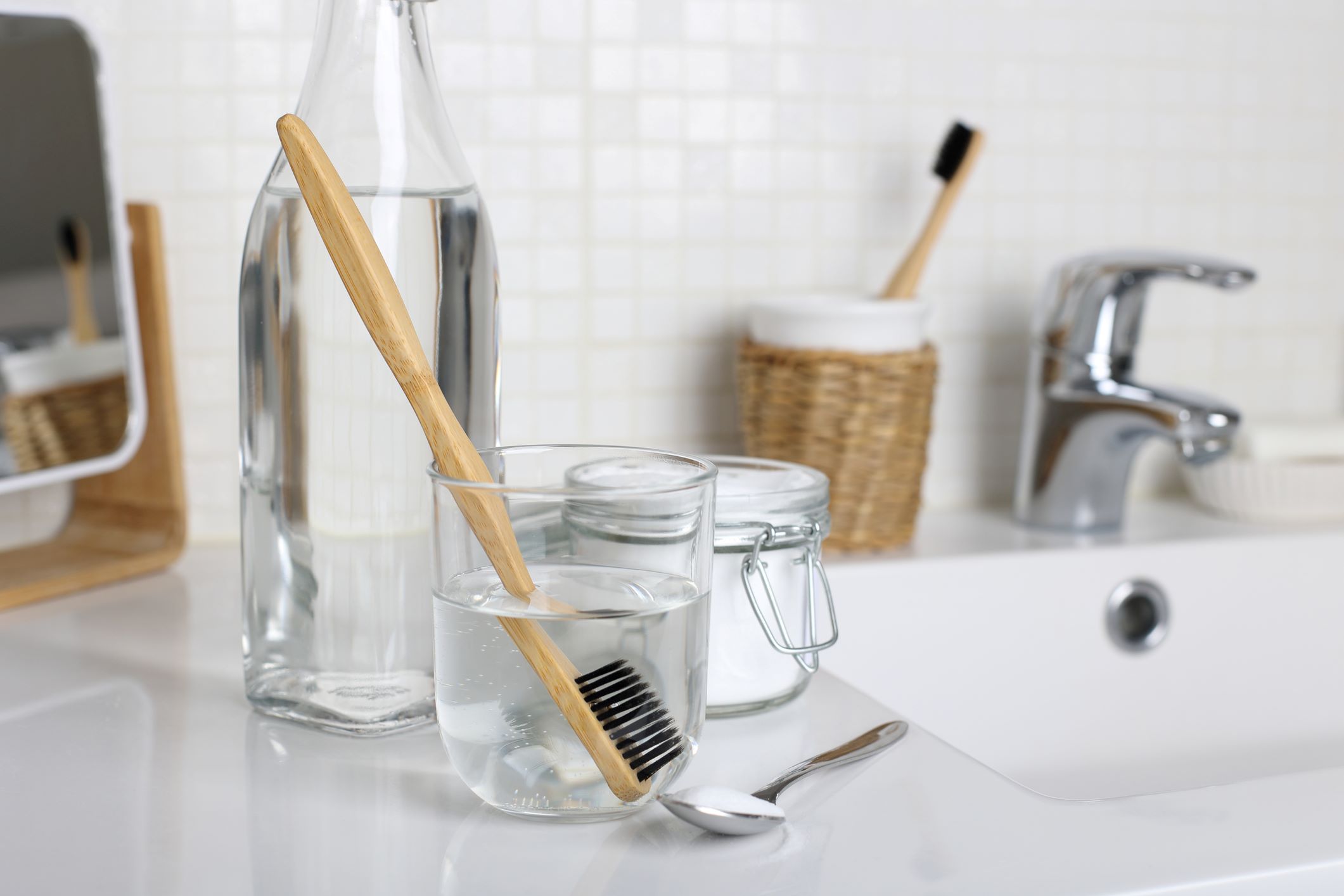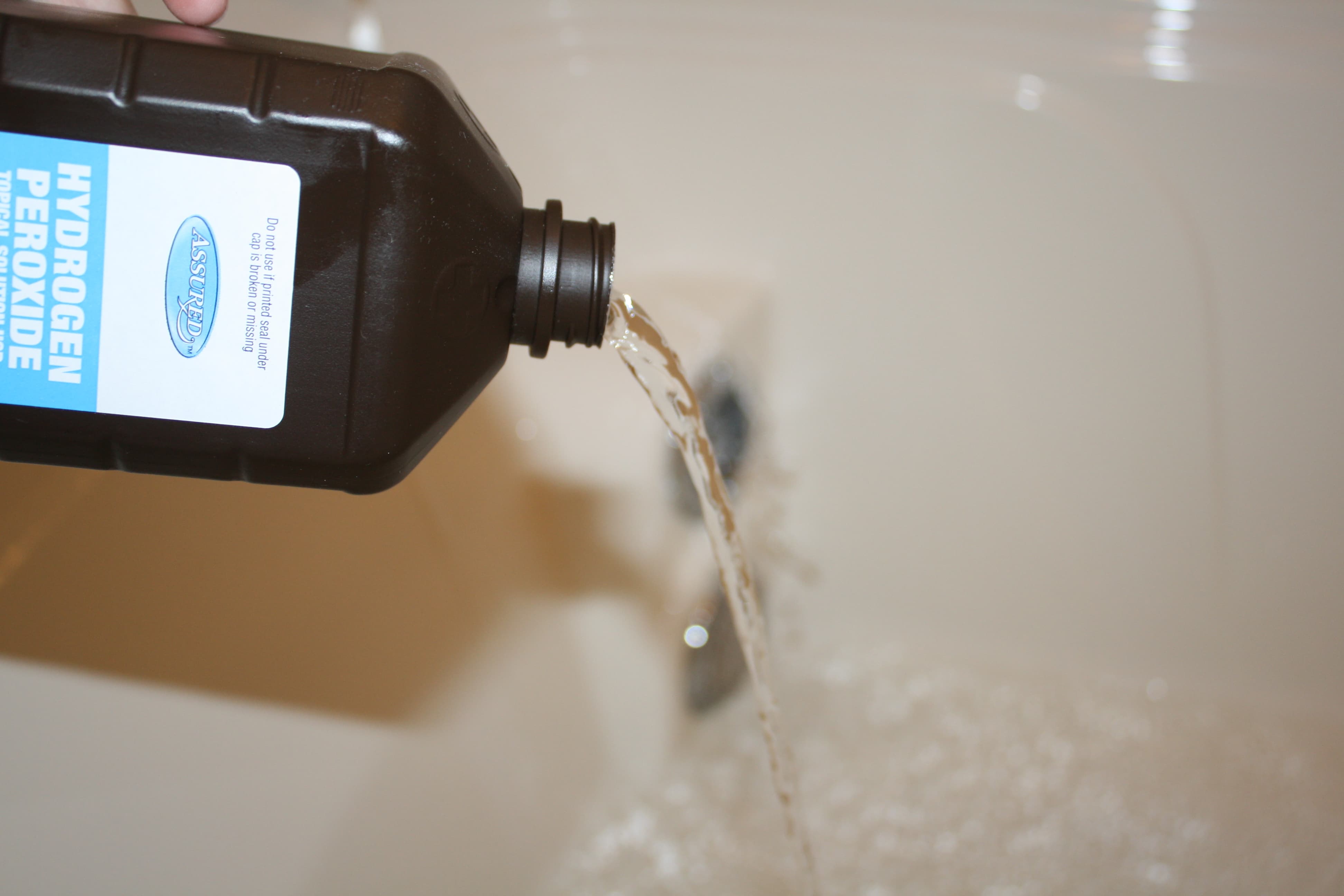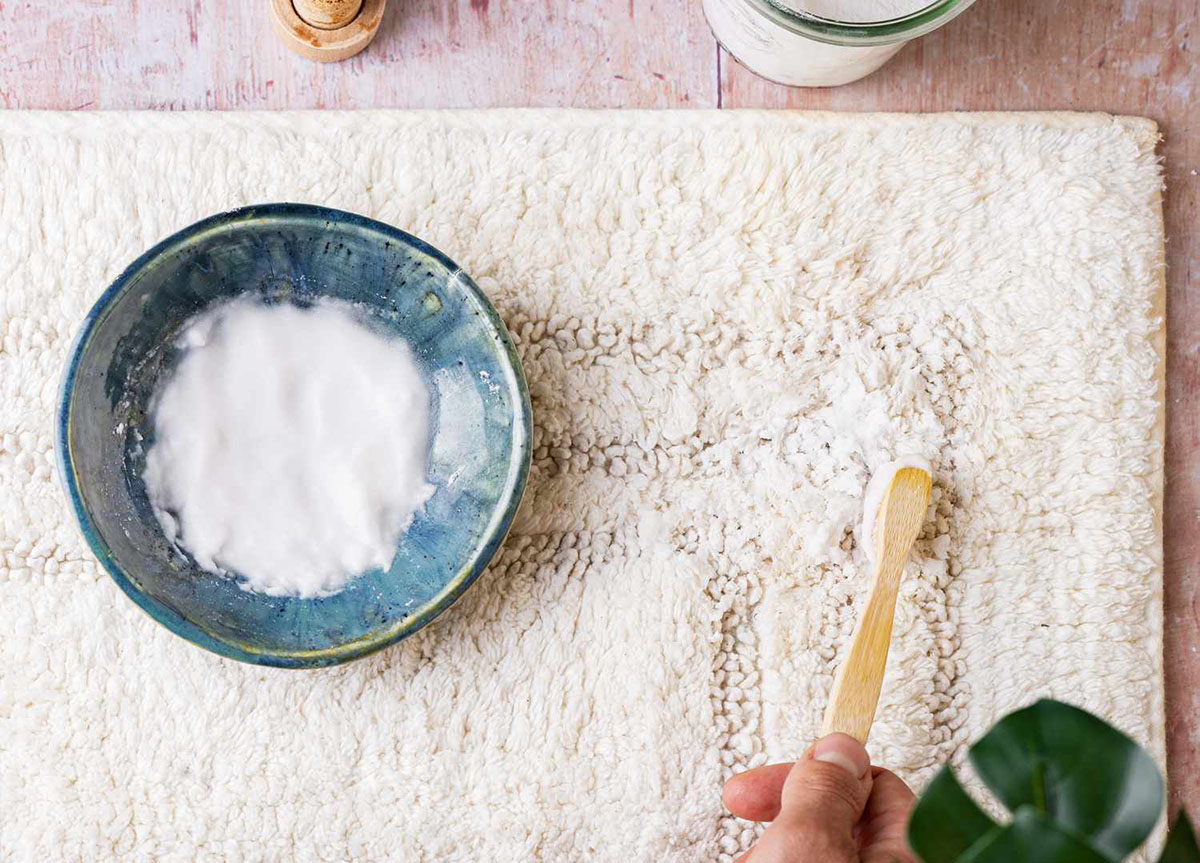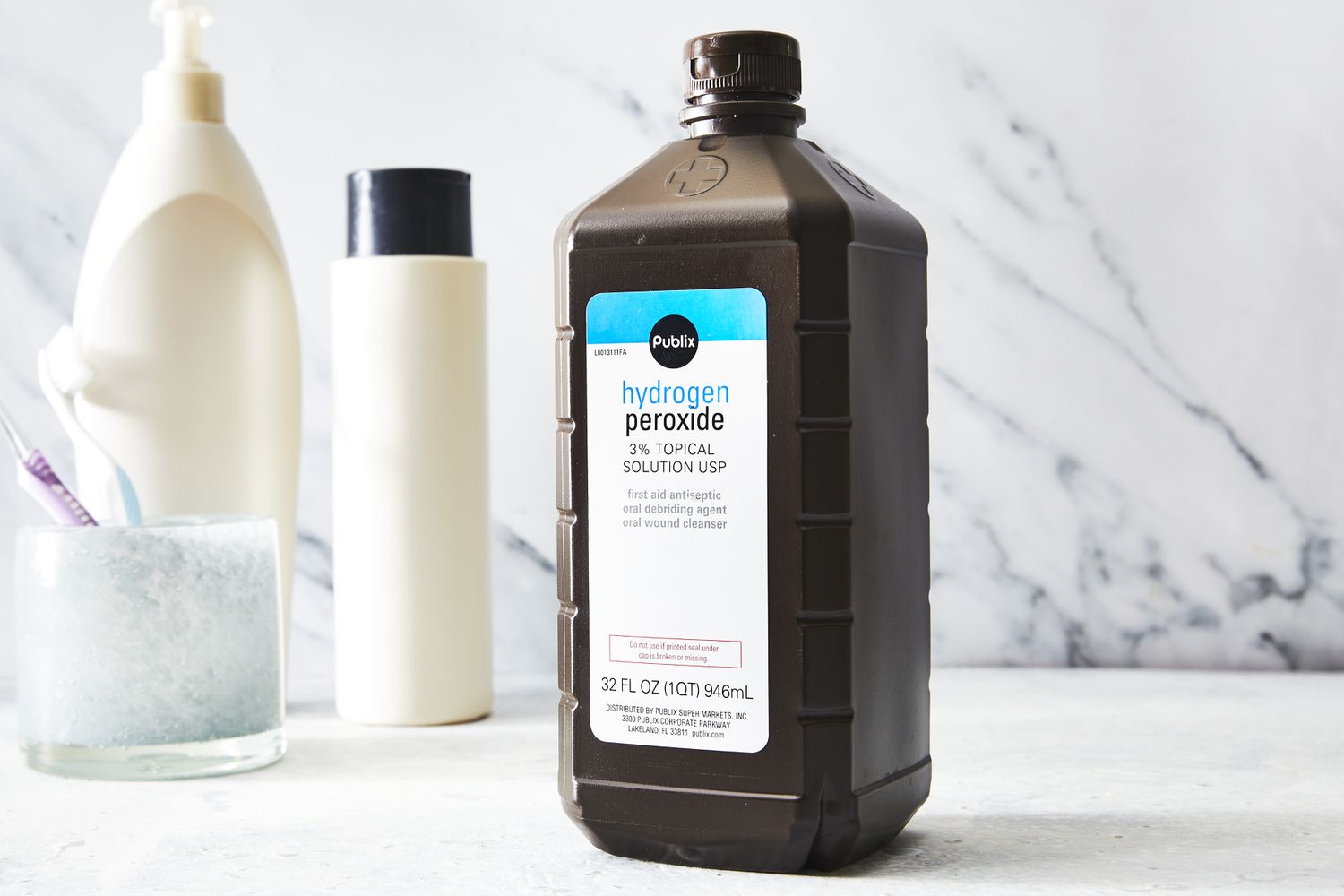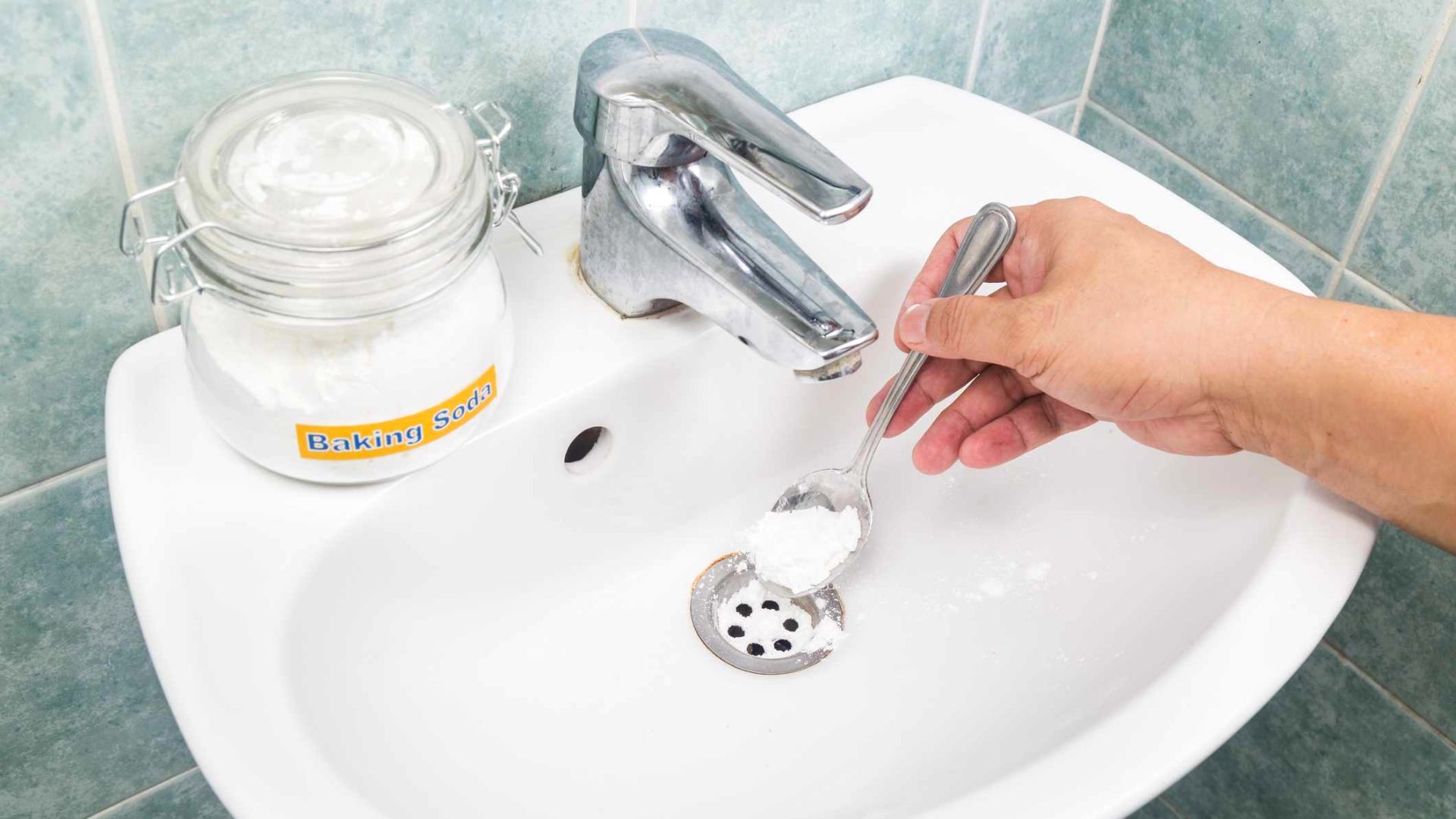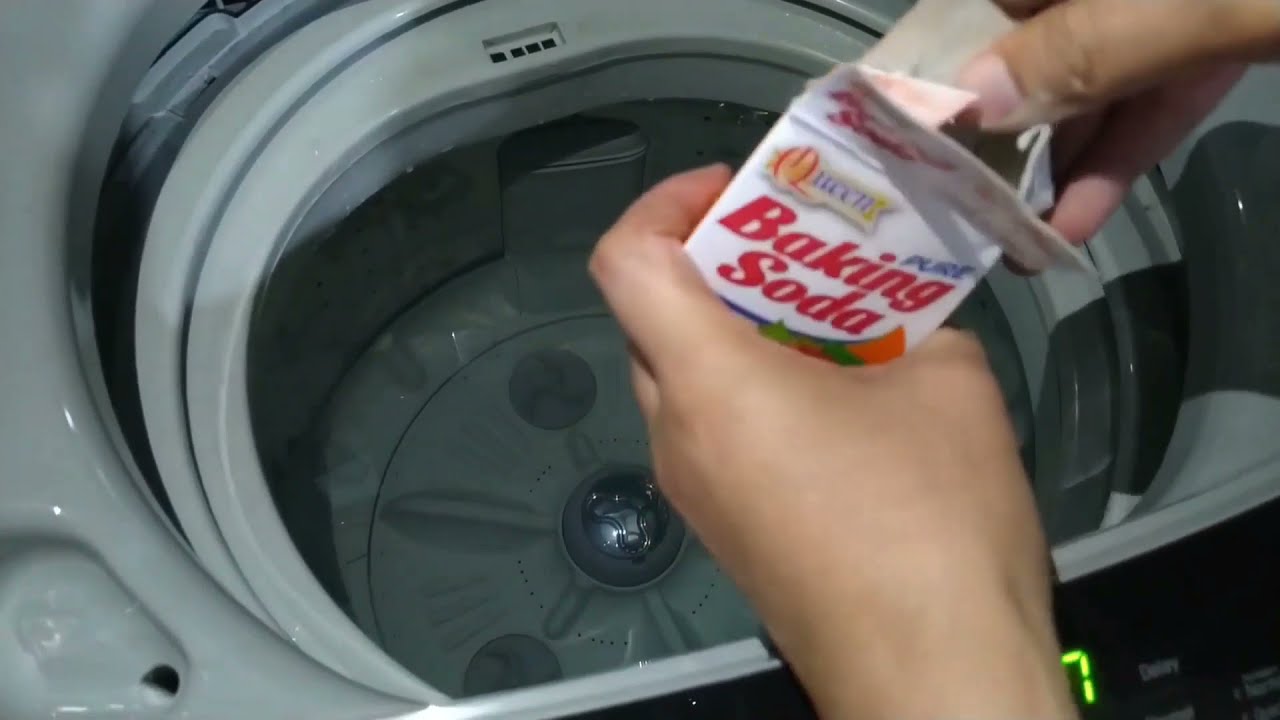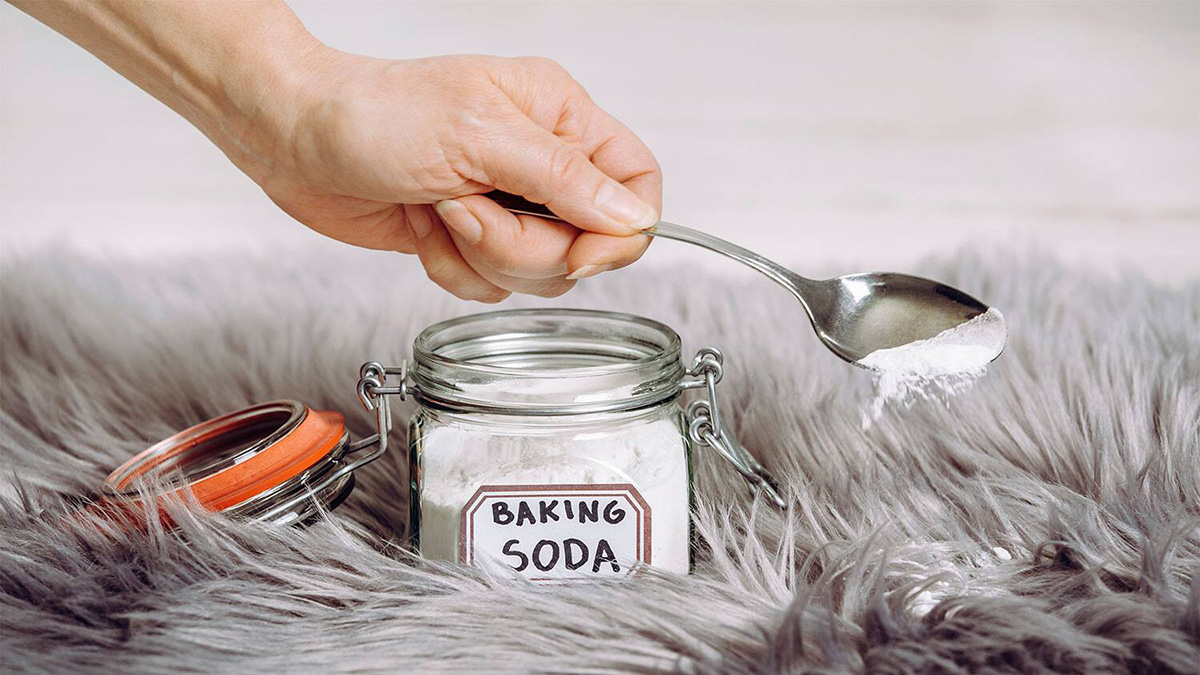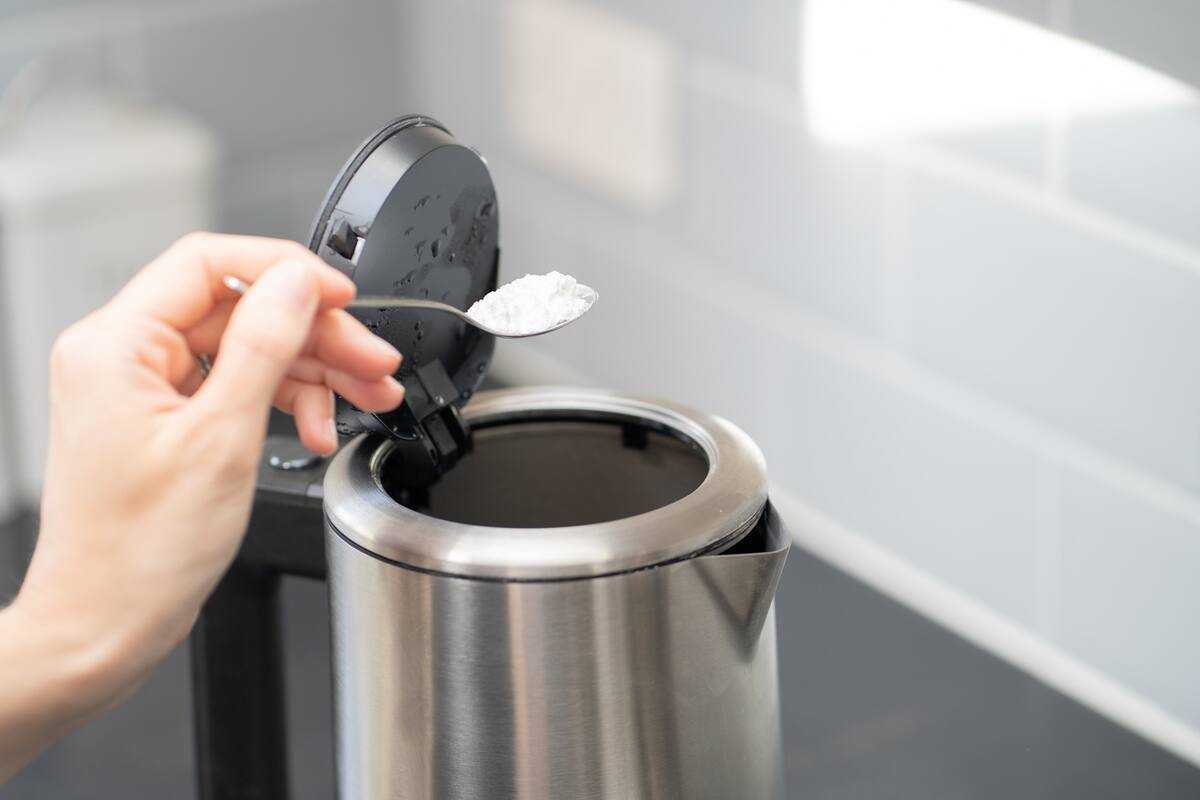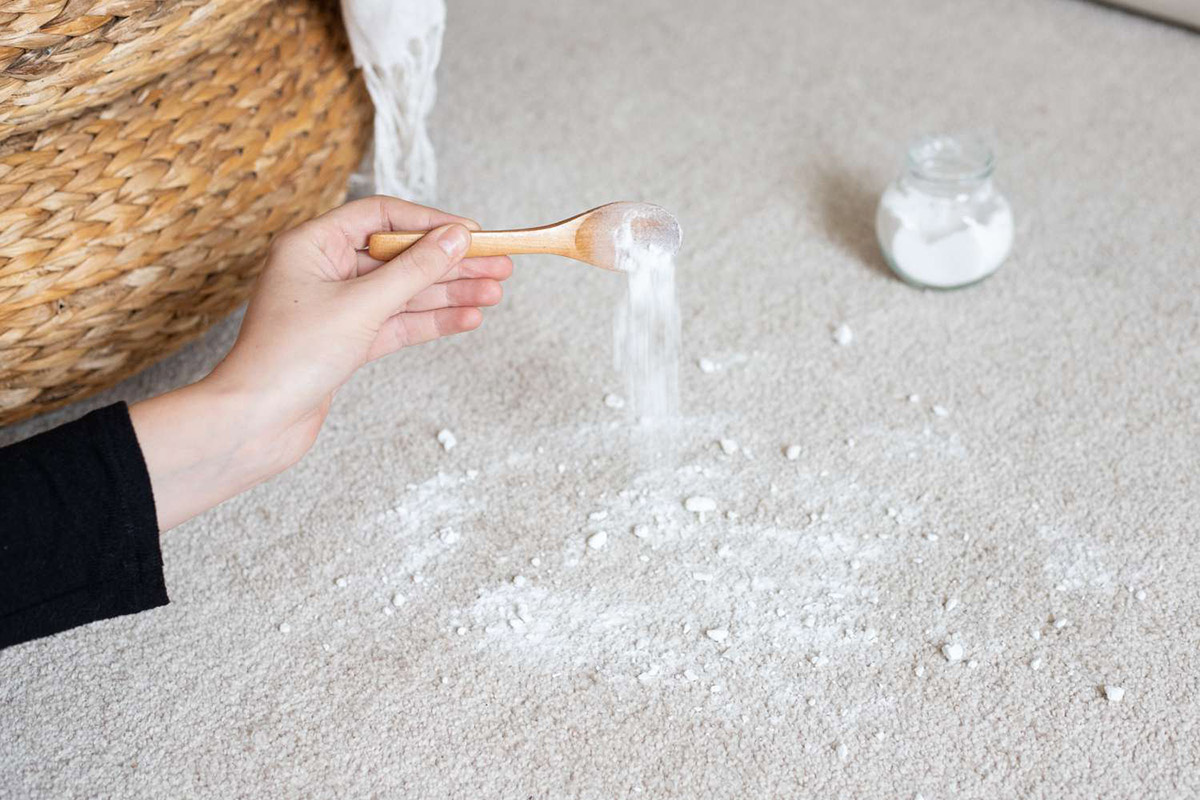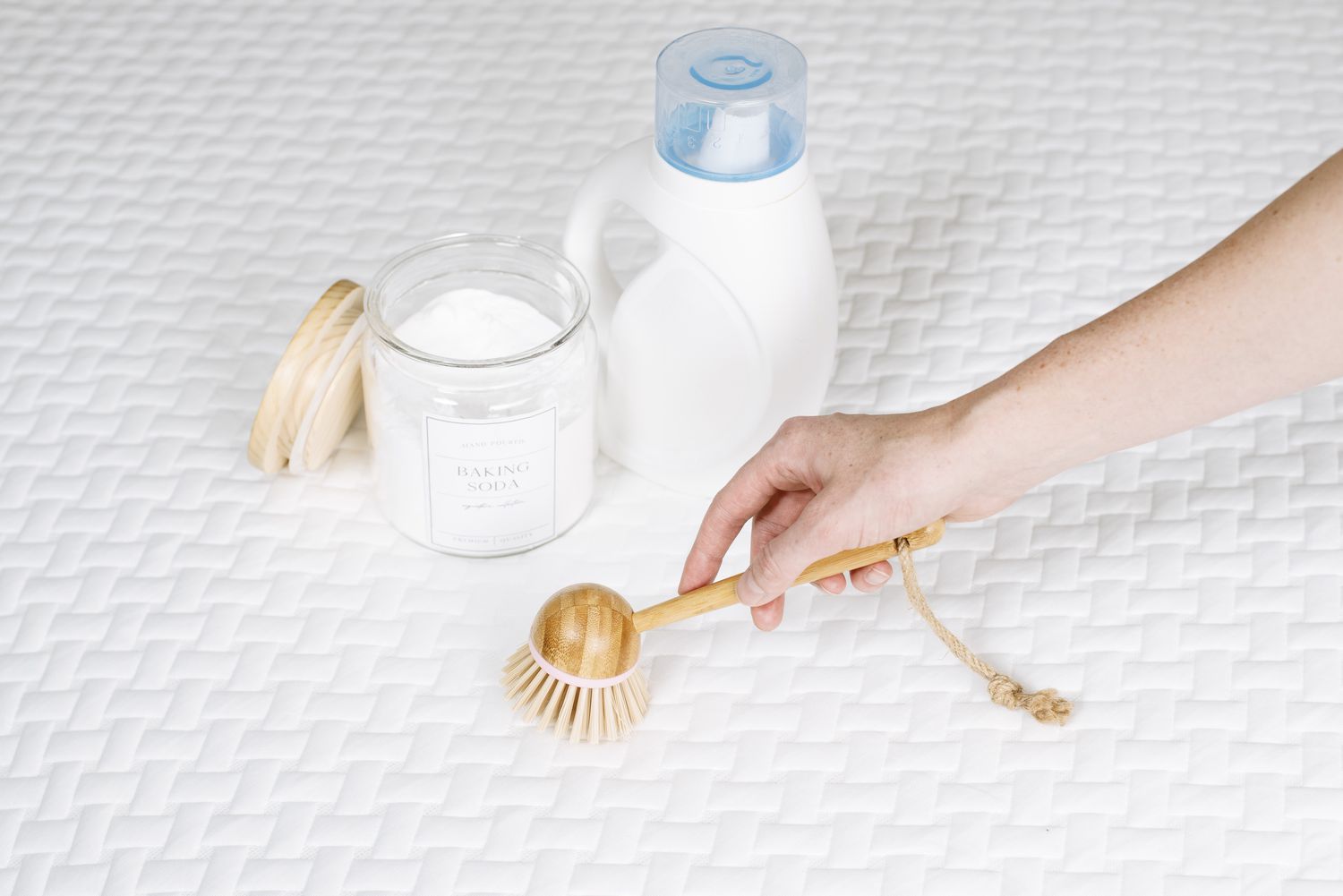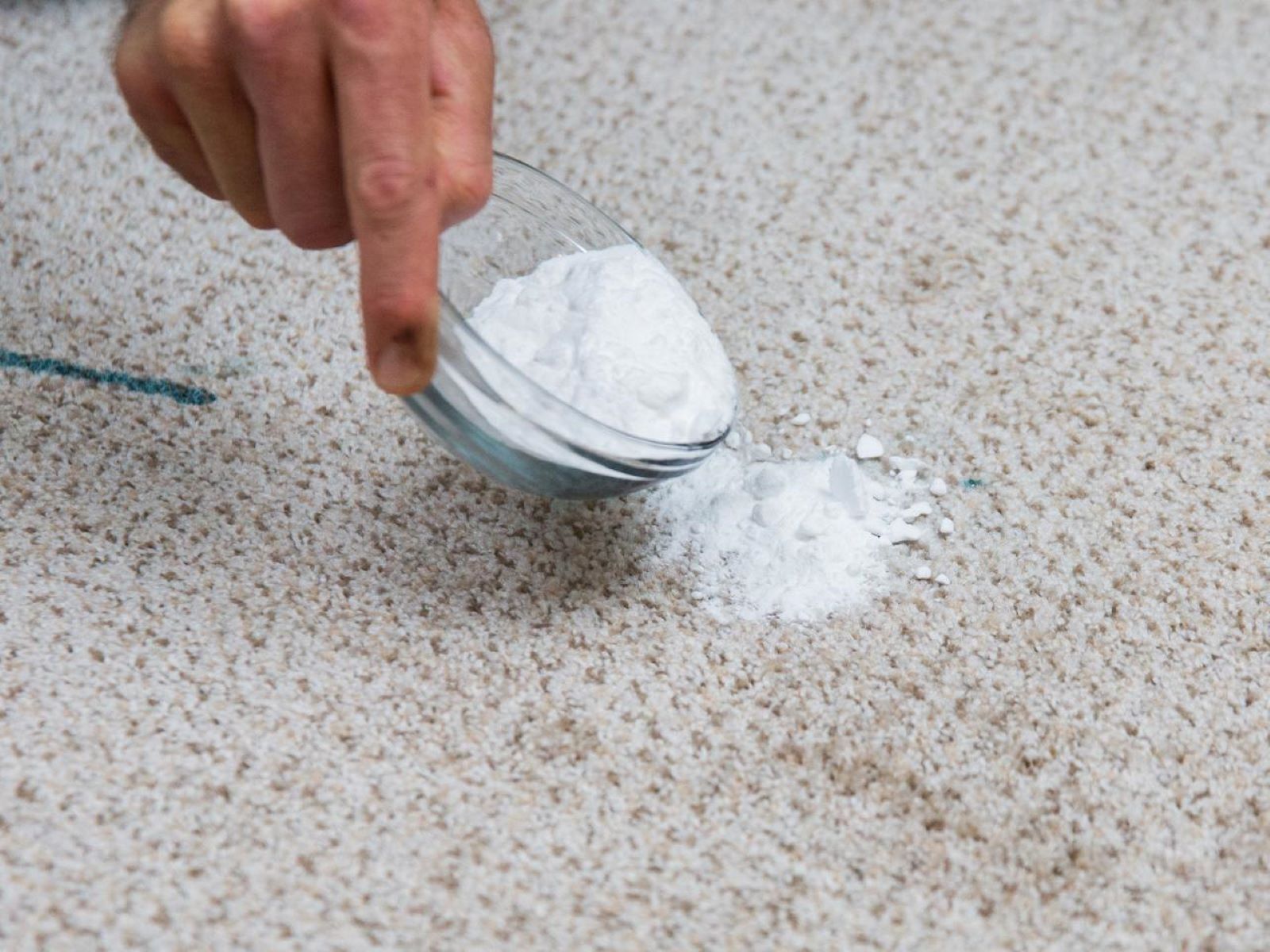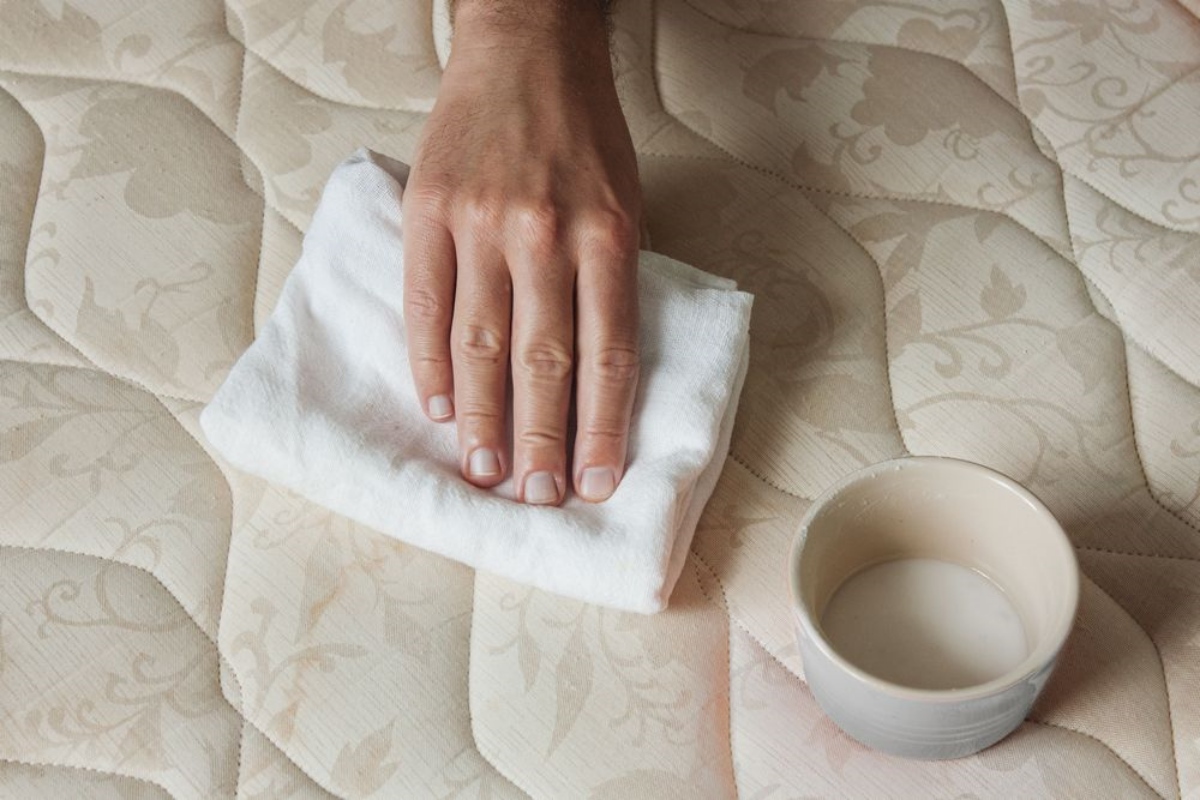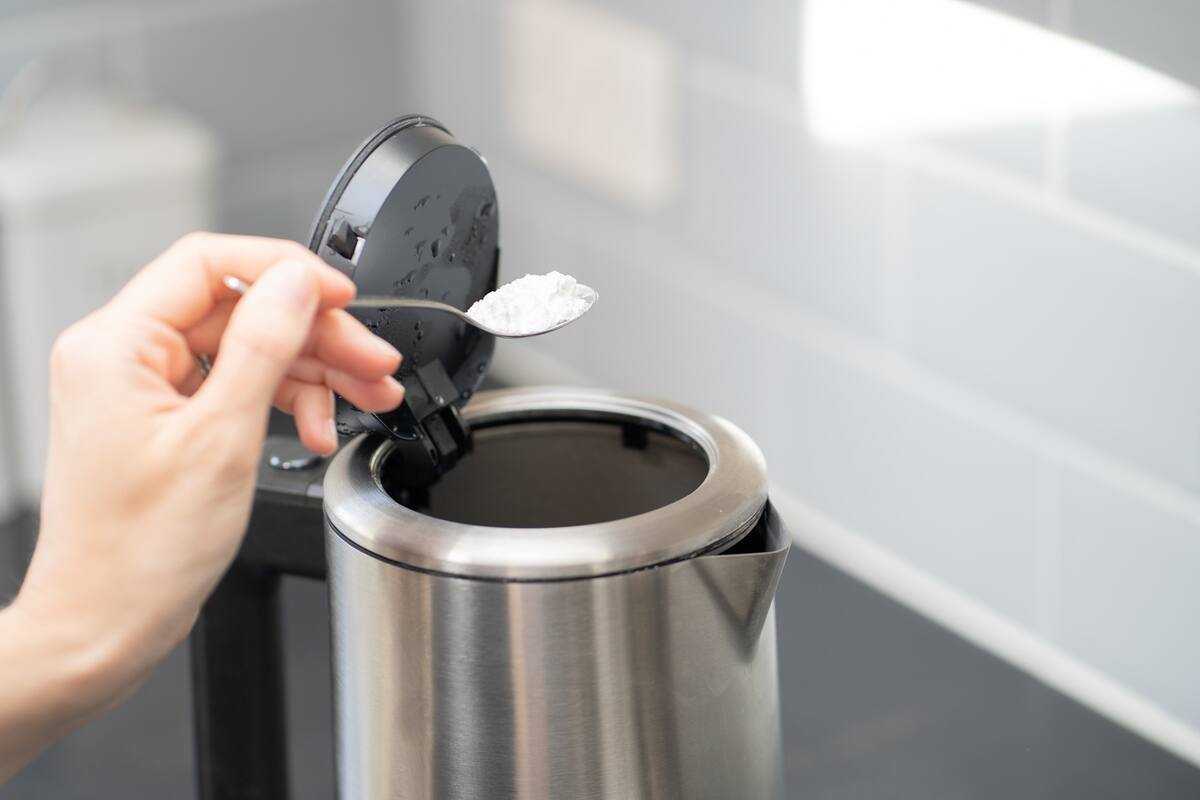Home>Articles>How To Clean A Carpet With Baking Soda And Hydrogen Peroxide
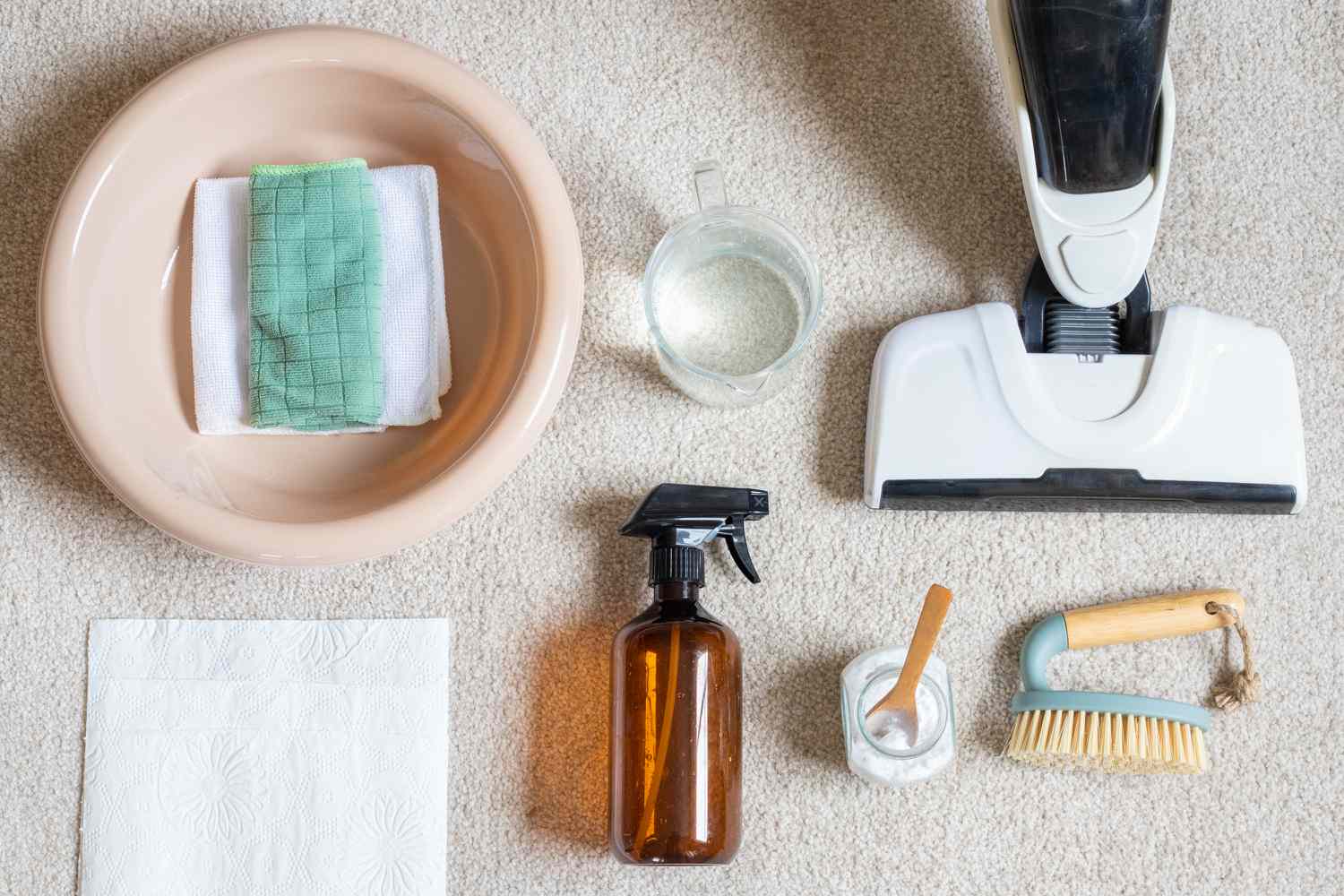

Articles
How To Clean A Carpet With Baking Soda And Hydrogen Peroxide
Modified: January 9, 2024
Learn how to clean your carpet using baking soda and hydrogen peroxide. Check out our informative articles for step-by-step instructions.
(Many of the links in this article redirect to a specific reviewed product. Your purchase of these products through affiliate links helps to generate commission for Storables.com, at no extra cost. Learn more)
Introduction
When it comes to keeping your carpets clean and fresh, sometimes traditional vacuuming just isn’t enough. That’s where the power of baking soda and hydrogen peroxide can come to the rescue. These household ingredients can work wonders in removing tough stains, eliminating odors, and revitalizing your carpets.
Baking soda and hydrogen peroxide are natural, non-toxic cleaners that are effective against a wide range of carpet issues. Baking soda, also known as sodium bicarbonate, is a versatile cleaning agent that can absorb odors and break down stains. Hydrogen peroxide, a mild and eco-friendly oxidizing agent, is known for its disinfecting and bleaching properties.
The combination of baking soda and hydrogen peroxide creates a powerful carpet cleaning solution. This natural duo can help remove lingering dirt, grime, and even stubborn stains from your carpet fibers, leaving them looking fresh and revitalized.
Not only are baking soda and hydrogen peroxide effective cleaners, but they are also cost-effective alternatives to commercial carpet cleaners. By opting for this DIY solution, you can save money while still achieving impressive results.
In this article, we will guide you through the process of cleaning your carpets using baking soda and hydrogen peroxide. We’ll walk you through each step, from preparation to drying, and provide you with additional tips and precautions to ensure successful carpet cleaning.
So, if you’re ready to bring new life to your carpets, grab your baking soda and hydrogen peroxide, and let’s get started!
Key Takeaways:
- Revitalize your carpets with baking soda and hydrogen peroxide, a natural and cost-effective solution for effective stain removal, odor elimination, and gentle carpet care.
- Ensure successful carpet cleaning by thorough preparation, pre-treating stains, and proper extraction and drying, while considering professional cleaning for specialized carpets.
Read more: How To Clean A Carpet With Hydrogen Peroxide
Benefits of Using Baking Soda and Hydrogen Peroxide for Carpet Cleaning
Using baking soda and hydrogen peroxide for carpet cleaning offers numerous advantages. Here are some of the key benefits:
- Effective Stain Removal: Baking soda and hydrogen peroxide work together to effectively remove a wide range of carpet stains, including pet stains, coffee spills, and food stains. The baking soda acts as a gentle abrasive, while the hydrogen peroxide helps to break down the stains and lift them from the carpet fibers.
- Natural and Non-Toxic: One of the greatest advantages of using baking soda and hydrogen peroxide is that they are natural and non-toxic cleaning agents. Unlike commercial cleaners that may contain harsh chemicals, these household ingredients are safe for use around pets and children.
- Odor Elimination: Baking soda is renowned for its ability to absorb and neutralize odors. By sprinkling baking soda on your carpet and allowing it to sit before vacuuming, you can effectively get rid of unpleasant smells, leaving your carpets smelling fresh and clean.
- Gentle on Carpets: Baking soda and hydrogen peroxide are gentle on carpet fibers, making them a suitable choice for regular maintenance and spot cleaning. These ingredients won’t cause discoloration or damage to most carpets, making them safe to use on a variety of carpet types.
- Cost-Effective Solution: Commercial carpet cleaners can be expensive and may require repeated purchases. Using baking soda and hydrogen peroxide allows you to achieve professional-level results at a fraction of the cost. These economical ingredients are readily available in most households.
- Environmentally Friendly: Opting for natural cleaning solutions like baking soda and hydrogen peroxide is a great way to minimize your environmental impact. These ingredients are biodegradable and do not contribute to water pollution or harm ecosystems.
By harnessing the power of baking soda and hydrogen peroxide, you can enjoy cleaner, fresher carpets without the use of harsh chemicals. So, the next time your carpets need a deep clean, consider these natural and effective carpet cleaning solutions!
Preparation
Before you begin the process of cleaning your carpet with baking soda and hydrogen peroxide, it’s important to gather the necessary supplies and prepare the area. Here’s what you’ll need:
- Baking Soda: Ensure you have enough baking soda to cover the entire carpeted area you plan to clean. Baking soda is available in most grocery stores and is typically affordable.
- Hydrogen Peroxide: You’ll need a bottle of hydrogen peroxide with a concentration of 3% or less. Higher concentrations may be too strong and can damage your carpet fibers. You can find hydrogen peroxide at most drugstores or supermarkets.
- Hot Water: Fill a bucket or spray bottle with hot water to use during the cleaning process. Hot water helps to dissolve and loosen dirt and stains from the carpet fibers.
- Carpet Brush or Scrubbing Brush: A carpet brush or scrubbing brush with soft bristles will help you effectively scrub the mixture into the carpet fibers and lift away dirt and stains.
- Vacuum Cleaner: Ensure your vacuum cleaner is in good working condition. You will need it to thoroughly vacuum the carpet before and after the cleaning process.
- Protective Gloves: It’s a good idea to wear gloves while handling the cleaning solution to protect your skin.
- Test Area: Before applying the baking soda and hydrogen peroxide mixture to the entire carpet, test the solution on a small, inconspicuous area to ensure it doesn’t cause any adverse reactions or discoloration.
Once you have gathered all the necessary supplies, it’s time to prepare the area for cleaning. Remove any furniture or obstacles from the carpeted space to allow for seamless cleaning. This will also prevent any accidental damage to your belongings.
Additionally, it’s helpful to thoroughly vacuum the carpet before starting the cleaning process. This removes loose dirt, debris, and dust that may interfere with the effectiveness of the baking soda and hydrogen peroxide mixture.
By properly preparing for the carpet cleaning process, you can ensure a smooth and successful cleaning experience. Now that you’re ready, let’s move on to the steps involved in cleaning your carpet with baking soda and hydrogen peroxide!
Step 1: Vacuuming the Carpet
The first step in cleaning your carpet with baking soda and hydrogen peroxide is to thoroughly vacuum the carpeted area. Vacuuming removes loose dirt, debris, and pet hair, allowing the baking soda and hydrogen peroxide mixture to better penetrate the carpet fibers and tackle deep-seated dirt and stains.
Follow these steps to ensure effective vacuuming:
- Prepare the vacuum cleaner: Ensure that your vacuum cleaner is in good working condition and the collection bag or canister is empty or not too full. This will help maintain optimal suction power.
- Clear the area: Remove any furniture, toys, or other objects from the carpeted area to ensure you have a clear space to vacuum.
- Start from the edges: Begin vacuuming from the edges of the room and work your way towards the center. This helps to suck up any dirt or debris that may have gathered along the baseboards.
- Overlap your strokes: To ensure thorough cleaning, make overlapping strokes with the vacuum cleaner. This ensures that you cover the entire carpeted area and leaves no dirt behind.
- Take your time: Don’t rush through the vacuuming process. Take your time and go over the carpeted area multiple times, especially in high-traffic areas or where there are stains or spills.
- Pay attention to corners and edges: Use the appropriate attachments or nozzle on your vacuum cleaner to clean hard-to-reach areas such as corners, edges, and crevices along the walls and furniture.
- Change or clean the filter (if applicable): If your vacuum cleaner has a filter, check if it needs to be replaced or cleaned. A clean filter ensures proper airflow and maximizes the vacuum’s suction power.
By thoroughly vacuuming the carpet, you remove loose dirt and debris, creating a clean canvas for the upcoming baking soda and hydrogen peroxide cleaning process. Once you’ve completed this step, you’re ready to move on to pre-treating any stains on your carpet.
Step 2: Pre-Treating Stains
Before applying the baking soda and hydrogen peroxide mixture to your carpet, it’s important to pre-treat any stains or spots. Pre-treating helps to break down the stains and makes them easier to remove during the cleaning process.
- Identify the stains: Take a close look at your carpet and identify any visible stains or spots. Common types of stains include pet stains, food and beverage spills, grease or oil stains, and ink or marker stains.
- Blot the stains: If the stain is still wet, use a clean cloth or paper towel to gently blot and absorb as much of the liquid as possible. Avoid scrubbing, as it may cause the stain to spread or push it deeper into the carpet fibers.
- Prepare a stain removal solution: Depending on the type of stain, you may need to prepare a specific stain removal solution. Common solutions include mixing dish soap with warm water for food and beverage stains, or using a vinegar and water mixture for pet stains. Consult a stain removal guide for specific instructions on different types of stains.
- Apply the stain removal solution: Dip a clean cloth or sponge into the stain removal solution and gently blot the stained area. Avoid rubbing, as it may damage the carpet fibers. Let the solution sit on the stain for a few minutes to allow it to break down the stain.
- Blot and rinse: After allowing the stain removal solution to work its magic, use a clean cloth or sponge to blot the area again, this time removing the solution from the carpet. Rinse the cloth or sponge frequently to avoid transferring the stain back onto the carpet.
- Repeat if necessary: For stubborn or older stains, you may need to repeat the pre-treatment process. Be patient and persistent, as some stains may require multiple treatments to fully eliminate.
By pre-treating the stains on your carpet, you increase the chances of completely removing them during the cleaning process. This step helps to break down the stains and loosen them from the carpet fibers, making them more responsive to the baking soda and hydrogen peroxide mixture that will be applied in the next step.
Once you’ve pre-treated any stains on your carpet, you’re now ready to move on to the next step: applying the baking soda and hydrogen peroxide mixture.
Step 3: Applying Baking Soda and Hydrogen Peroxide Mixture
Now that you’ve pre-treated any stains on your carpet, it’s time to apply the powerful cleaning mixture of baking soda and hydrogen peroxide. This combination will work together to lift dirt, eliminate odors, and revitalize your carpet.
- Mix the solution: In a small bowl or container, combine equal parts baking soda and hydrogen peroxide. Stir well to create a paste-like consistency. The amount of mixture you’ll need depends on the size of the carpeted area you’re cleaning, so adjust the quantities accordingly.
- Apply the mixture: Using a clean cloth or sponge, scoop up a small amount of the baking soda and hydrogen peroxide mixture. Gently rub the mixture into the carpet fibers, focusing on high-traffic areas or spots with visible stains. Ensure that the mixture is evenly distributed, but avoid saturating the carpet.
- Use a carpet brush or scrubbing brush: To further work the mixture into the carpet, use a carpet brush or scrubbing brush with soft bristles. Gently scrub the mixture in a circular motion, paying extra attention to stubborn stains or heavily soiled areas. This action helps to break down dirt and stains, allowing the baking soda and hydrogen peroxide to penetrate deeper into the carpet fibers.
- Let it sit: After applying the mixture and scrubbing the carpet, allow the baking soda and hydrogen peroxide to sit on the carpet for at least 15 minutes. This dwell time gives the solution enough time to work its magic and break down dirt, stains, and odors.
During this step, the baking soda absorbs odors, while the hydrogen peroxide tackles tough stains and lifts dirt from the carpet fibers. The combination of these cleaning agents helps to restore the appearance and freshness of your carpet.
Once the mixture has had sufficient time to sit, it’s time to move on to the next step: scrubbing the carpet.
Mix equal parts of baking soda and hydrogen peroxide to form a paste. Apply the paste to the stained area of the carpet, let it sit for 15-30 minutes, then scrub and rinse with water. This natural solution can help remove tough stains and odors from your carpet.
Step 4: Scrubbing the Carpet
Now that the baking soda and hydrogen peroxide mixture has had some time to work its magic, it’s time to give your carpet a thorough scrub. Scrubbing helps to further break down dirt and stains, ensuring that they are lifted from the carpet fibers.
- Prepare the carpet brush or scrubbing brush: Ensure that your carpet brush or scrubbing brush has soft bristles to prevent any damage to the carpet fibers. If necessary, dampen the bristles slightly with water to enhance their effectiveness.
- Start scrubbing: Working in small sections, use the carpet brush or scrubbing brush to vigorously scrub the carpet fibers. Focus on areas with visible stains or heavy soiling, but be sure to scrub the entire carpeted area to achieve an even clean.
- Use circular motions: Scrub in circular motions, applying moderate pressure. This motion helps to agitate the carpet fibers and dislodge dirt and stains that may be trapped deep within.
- Pay attention to high-traffic areas: Give extra attention to high-traffic areas, such as the entryway or hallways, where dirt and grime tend to accumulate. These areas may require a bit more scrubbing to achieve optimal results.
- Be thorough but gentle: While it’s important to scrub the carpet thoroughly, it’s equally important to be gentle to avoid causing any damage. Avoid aggressive scrubbing or harsh movements that may fray or pull at the carpet fibers.
- Continue scrubbing until satisfied: Scrub the carpet until you’re satisfied with the level of cleanliness. If necessary, repeat the scrubbing process in heavily soiled areas or on stubborn stains for additional cleaning power.
By scrubbing the carpet, you ensure that the baking soda and hydrogen peroxide penetrate deep into the carpet fibers, lifting dirt, grime, and stains that may have been embedded. This step helps to revive your carpet’s appearance, leaving it looking fresh and revitalized.
Once you’ve completed the scrubbing process, it’s time to move on to the next step: allowing the baking soda and hydrogen peroxide mixture to sit on the carpet.
Step 5: Allowing the Mixture to Sit
After scrubbing the carpet with the baking soda and hydrogen peroxide mixture, it’s important to allow the solution to sit on the carpet for a designated period. This allows the cleaning agents to continue working their magic and helps to break down any remaining dirt, stains, and odors.
- Set a timer: Determine the amount of time you want to allow the mixture to sit on the carpet. This can range from 30 minutes to several hours, depending on the level of soiling and the time available.
- Avoid foot traffic: During the waiting period, it’s important to avoid walking on the carpet to prevent disturbing the mixture and undoing the cleaning process. If necessary, use caution tape or signs to warn others to avoid the area.
- Close off the area: If possible, close off the room or section of the carpeted area to prevent pets or children from accessing it. This ensures that the baking soda and hydrogen peroxide mixture can work undisturbed.
- Keep good ventilation: While the mixture is sitting on the carpet, ensure the room is well-ventilated by opening windows or using fans. This helps to reduce any odors from the cleaning solution and aids in the drying process.
Allowing the mixture to sit on the carpet is crucial as it allows the cleaning agents to deeply penetrate the carpet fibers, breaking down dirt and stains for a more thorough clean. The waiting period also gives the baking soda a chance to absorb any lingering odors, leaving your carpet smelling fresh.
Once the designated time has passed, you’re ready to move on to the next step: extracting the baking soda and hydrogen peroxide mixture from the carpet.
Step 6: Extracting the Mixture
Now that you’ve allowed the baking soda and hydrogen peroxide mixture to sit on the carpet and work its magic, it’s time to remove the mixture to reveal clean and refreshed carpet fibers. The extraction process involves removing the excess mixture and any residual dirt or stains that have been lifted from the carpet.
- Prepare a clean, dry cloth or towel: Get a clean cloth or towel that is absorbent and large enough to cover the carpeted area you’ve been cleaning.
- Blot the carpet: Starting from one end of the carpeted area, use the cloth or towel to gently blot and absorb the excess baking soda and hydrogen peroxide mixture. Work your way across the carpet, repeating the blotting process until you’ve covered the entire area.
- Rinse the cloth or towel: Rinse the cloth or towel frequently during the process to remove the absorbed mixture and prevent it from being reapplied to the carpet.
- Apply light pressure: To ensure effective extraction, apply light pressure while blotting. This helps to lift the remaining mixture and any loosened dirt or stains from the carpet fibers.
- Repeat if necessary: For heavily soiled areas or persistent stains, you may need to repeat the blotting process. Be patient and persistent, giving extra attention to stubborn spots.
- Avoid rubbing or scrubbing: It’s important to only blot the carpet and avoid rubbing or scrubbing, as this may spread the mixture or push dirt and stains further into the carpet fibers.
The extraction process removes the excess baking soda and hydrogen peroxide mixture, along with the dirt and stains that have been lifted from the carpet. By blotting and absorbing the mixture, you reveal cleaner and refreshed carpet fibers.
Once you’ve completed the extraction process, it’s time for the final step: drying the carpet.
Step 7: Drying the Carpet
After successfully extracting the baking soda and hydrogen peroxide mixture, it’s important to ensure that your carpet dries thoroughly. Proper drying prevents any moisture from lingering in the carpet fibers and reduces the risk of mold or mildew growth.
- Open windows or turn on fans: Increase airflow in the room by opening windows or using fans to help expedite the drying process. This helps to circulate fresh air and aid in moisture evaporation.
- Set up floor fans: If you have floor fans, position them strategically to encourage air movement over the carpeted areas. Aim towards damp or moist spots to accelerate drying.
- Avoid walking on the carpet: During the drying process, it’s best to avoid walking on the carpet to prevent any transfer of dirt or moisture from your shoes. If you must walk on it, place clean towels or rugs in high-traffic areas to minimize contact.
- Use dehumidifiers: If the climate is humid or the carpet is taking longer to dry, consider using dehumidifiers to remove excess moisture from the air. This can help speed up the drying process.
- Check moisture levels: Test the carpet’s moisture levels by placing a clean, dry cloth on the surface and pressing down firmly. If the cloth becomes damp, continue drying the carpet until the cloth remains dry.
- Monitor the progress: Regularly check the carpet to see how quickly it’s drying. Patience is key, as the drying time can vary depending on factors such as carpet thickness, humidity levels, and airflow.
- Keep pets and children away: To ensure the carpet dries undisturbed, prevent pets and children from entering the room until it is completely dry. This helps to avoid any potential damage or re-soiling.
Properly drying the carpet is crucial as it eliminates any moisture that may remain after cleaning. By following these steps, you can ensure that your carpet is thoroughly dry and ready to be enjoyed once again.
With the completion of the drying process, you have successfully cleaned your carpet with baking soda and hydrogen peroxide. The end result should be a refreshed, odor-free, and visibly cleaner carpet that will enhance the overall appearance of your space.
Congratulations on a job well done!
Additional Tips and Precautions
While cleaning your carpet with baking soda and hydrogen peroxide is generally safe and effective, it’s important to keep the following tips and precautions in mind to ensure optimal results:
- Perform a patch test: Before applying the baking soda and hydrogen peroxide mixture to your entire carpet, test it on a small, inconspicuous area first. This helps to ensure that the solution does not cause any adverse reactions or discoloration.
- Avoid over-saturation: When applying the cleaning mixture, be mindful not to saturate the carpet with excessive amounts of water or solution. Over-saturation can lead to longer drying times and potential damage to the carpet fibers.
- Protect delicate or sensitive carpets: If you have a delicate or sensitive carpet, such as silk or antique rugs, consult a professional cleaner before attempting to clean it yourself. They can provide guidance on the best method and products to use.
- Address spills and stains immediately: The sooner you attend to spills and stains, the easier they are to remove. Promptly blot and pre-treat any spills or stains on your carpet to prevent them from setting or becoming more difficult to remove later.
- Regularly vacuum your carpet: To maintain a clean and healthy carpet, make sure to vacuum regularly. This helps to remove loose dirt, debris, and allergens, extending the lifespan of your carpet and reducing the need for deep cleaning as frequently.
- Consider professional cleaning: While DIY cleaning methods can be effective, it’s a good idea to schedule professional carpet cleaning at least once or twice a year. Professionals have specialized equipment and knowledge to tackle stubborn stains and deeply embedded dirt.
- Protect the carpet during drying: Place furniture coasters or aluminum foil under furniture legs to prevent any potential color transfer or damage to the damp carpet during the drying process.
- Read and follow product instructions: If you are using specific carpet cleaning products along with baking soda and hydrogen peroxide, make sure to carefully read and follow the instructions provided by the manufacturer for optimal results.
- Keep a safe environment: Always keep cleaning solutions and equipment out of reach of children and pets. Also, ensure that the area is well-ventilated when using cleaning solutions.
By following these additional tips and precautions, you can ensure a successful carpet cleaning experience while minimizing the risk of any damage to your carpet or adverse effects on your health.
Now that you have a thorough understanding of the process, you are ready to tackle your carpet cleaning project using baking soda and hydrogen peroxide. Enjoy the fresh and clean results!
Conclusion
Cleaning your carpet with baking soda and hydrogen peroxide is a cost-effective and eco-friendly solution to revive and refresh your carpets. The powerful combination of these household ingredients can effectively remove stains, eliminate odors, and restore the overall appearance of your carpet.
Throughout this step-by-step guide, we’ve explored the benefits of using baking soda and hydrogen peroxide for carpet cleaning, from their natural and non-toxic properties to their ability to tackle a wide range of stains and odors. We’ve discussed the importance of proper preparation, including vacuuming the carpet and pre-treating stains.
The application process of the baking soda and hydrogen peroxide mixture, followed by thorough scrubbing and allowing it to sit, ensures a deep clean by penetrating the carpet fibers and lifting dirt and stains. Lastly, we emphasized the significance of proper extraction and thorough drying to prevent moisture-related issues.
We also provided additional tips and precautions to help you achieve the best results and keep your carpets in pristine condition. These guidelines include performing a patch test, addressing spills promptly, and considering professional cleaning for specialized carpets.
By following these instructions and taking the necessary precautions, you can enjoy cleaner, fresher, and revitalized carpets without the use of harsh chemicals. Not only will you achieve outstanding results, but you’ll also contribute to a healthier environment for yourself and your family.
So, the next time your carpets are in need of a deep clean, reach for baking soda and hydrogen peroxide. With their powerful cleaning properties, you can restore the beauty and cleanliness of your carpets, creating a more inviting and comfortable space in your home.
Remember, a clean carpet not only enhances the appearance of your home but also contributes to a healthier indoor environment for you and your loved ones. Enjoy the benefits of using baking soda and hydrogen peroxide for carpet cleaning and revel in the freshness and beauty of your revitalized carpets!
Frequently Asked Questions about How To Clean A Carpet With Baking Soda And Hydrogen Peroxide
Was this page helpful?
At Storables.com, we guarantee accurate and reliable information. Our content, validated by Expert Board Contributors, is crafted following stringent Editorial Policies. We're committed to providing you with well-researched, expert-backed insights for all your informational needs.
